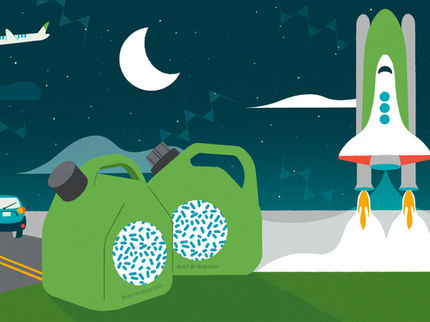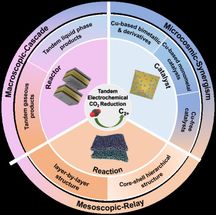Upcycling excess carbon dioxide with tiny microbes
Scientists specially engineered microbes to turn carbon dioxide into chemicals that are potential building blocks to pharmaceuticals
While some microbes can make people sick or spoil food, others are critical for survival. These tiny organisms can also be engineered to make specific molecules. Researchers reporting in ACS Sustainable Chemistry & Engineering have rewired one such microbe to help tackle Greenhouse Gases in the atmosphere: It takes in carbon dioxide (CO2) gas and produces mevalonate, a useful building block for pharmaceuticals.
The increasing concentration of greenhouse gases in the atmosphere has led to widespread global warming. To begin to address the problem, greenhouse gas emissions, including CO2, need to be significantly reduced. On top of that, the CO2 already present could be removed. Methods to capture CO2 are in development, and one promising option involves microbes. Genetic engineering can modify their natural biosynthetic pathways, turning the microbes into miniature living factories that can produce all sorts of things — for example, insulin.
One potential microbial factory is Cupriavidus necator H16, a bacterium favored thanks to its relatively unfussy nature about what it’s fed. Because it can survive on little more than CO2 and hydrogen gas, the bacterium is a great candidate for capturing and converting the gases into larger molecules. But even though the microbe’s DNA can be rewired to produce interesting products, it’s not great at remembering those new instructions over time. To put it scientifically, the plasmids (the genetic instructions) are relatively unstable. Katalin Kovacs and colleagues wanted to see if they could improve C. necator’s ability to remember its new instructions and produce useful carbon-based building blocks out of CO2 gas.
The team got to work hacking C. necator’s biochemical pathways responsible for converting CO2 into larger six-carbon molecules. The key to improving the plasmid’s stability lies in an enzyme called RubisCo, which allows the bacterium to utilize CO2. Essentially, the new plasmid was paired to the enzyme, so if a cell failed to remember the new instructions, it would fail to remember how to make RubisCo and die. Meanwhile, the remaining cells with better memories would survive and replicate, passing along the plasmid.
In tests, the newly engineered microbes produced significantly more of the six-carbon molecule mevalonate compared with a control strain. Mevalonate is a molecular building block for all sorts of substances in living and synthetic systems alike, including cholesterol and other steroid molecules with pharmaceutical applications. In fact, this research produced the largest amounts to date of mevalonate from CO2 or other single-carbon reactants using microbes. The researchers say this is a more economically feasible carbon fixation system than previous systems involving C. necator, and it could be expanded to other microbial strains as well.
Original publication
Most read news
Original publication
Marco Garavaglia, Callum McGregor, Rajesh Reddy Bommareddy, Victor Irorere, Christian Arenas, Alberto Robazza, Nigel Peter Minton, Katalin Kovacs; "Stable Platform for Mevalonate Bioproduction from CO2"; ACS Sustainable Chemistry & Engineering, 2024-8-26
Topics
Organizations
Other news from the department science

Get the chemical industry in your inbox
By submitting this form you agree that LUMITOS AG will send you the newsletter(s) selected above by email. Your data will not be passed on to third parties. Your data will be stored and processed in accordance with our data protection regulations. LUMITOS may contact you by email for the purpose of advertising or market and opinion surveys. You can revoke your consent at any time without giving reasons to LUMITOS AG, Ernst-Augustin-Str. 2, 12489 Berlin, Germany or by e-mail at revoke@lumitos.com with effect for the future. In addition, each email contains a link to unsubscribe from the corresponding newsletter.


























































